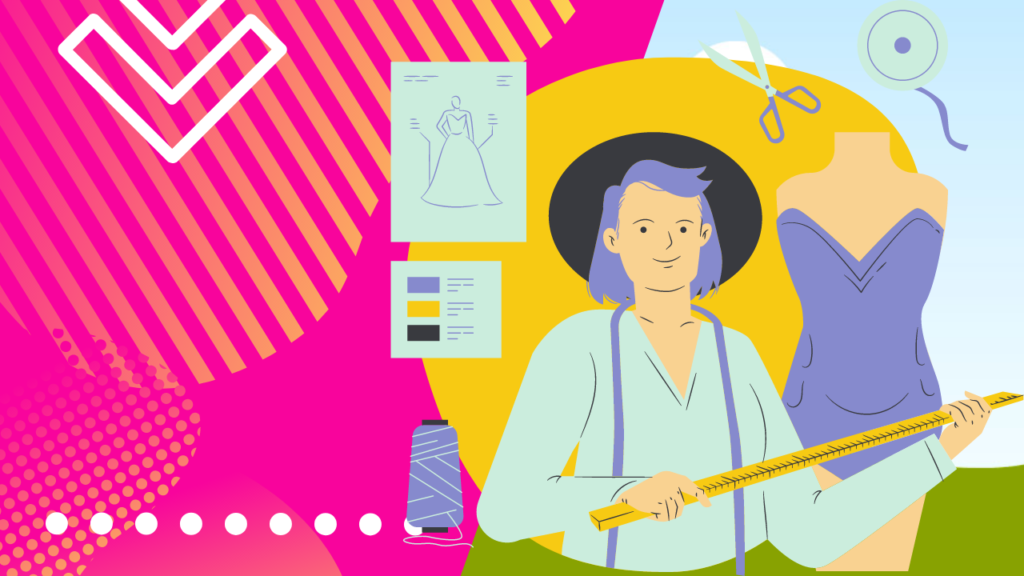
The Ultimate Guide to UX UI Design Job Definitions for Beginners

Introduction to UX UI Design
UX design is a relatively new field. There is a lot of confusion between what User Experience (UX) Designers and UI Designers do. This article clarifies their duties and responsibilities to clear up this confusion.
In a Nutshell
Many designers are unsure of their titles, with some people even thinking they (UX and UI designers) are the same person. These two professionals have different, albeit related, roles in an organization.
User interface design is about building a product’s look and feel, while user experience design involves designing how people will interact with the product.
User Interface Designers build the look and feel of a digital product, while User Experience Designers work on how people will interact with the product.
UI designers create the interface for a website or app; UX designers make sure it’s easy to use for everyone.
UX vs UI – What is the Difference?
UX design (a.k.a. User Experience design) focuses on the experience of the user, while UI design (a.k.a. User Interface design) focuses on how that experience is communicated and how the user interacts with the system or the application.
User experience (UX) design is a strategy for designing products that provide meaningful and relevant experiences to users. It incorporates elements from industrial, graphic, interactive and other design disciplines to inform product strategy and guide the implementation of functionality. It aims to create a smooth and pleasant experience for the user while achieving the goals of the client or organization, like selling widgets or enrolling subscribers.
User interface (UI), on the other hand, refers to a style of graphic design geared toward computers, mobile devices and other interactive electronic equipment.
A UX Designer should be able to take care of everything that has to do with the user experience of your product while the UI Designer should deal with the visuals of your project.
To put it in another way — the main difference between UX designers and UI designers is that UX design is focused on giving a good experience to each individual, while UI design is focused on streamlining interactions so they can be completed as quickly as possible.
UX design is a wider term that encompasses all the processes and methods used to improve user experience. UI design is the visual component of UX.
The roles of a user experience designer are to study the process people go through in order to complete a task, identify what is good or bad about that process, and then improve it.
In contrast, a UI designer’s responsibility is to provide the final aesthetics for an application or website.
What are Some Key Skill Sets of a UX Designer or UI Designer?
The first thing you need to do to understand the skill sets required is take a user-centered approach which includes considering the experience from a user’s point of view and figuring out what they need to complete their tasks.
An UX designer is expected to have a correct view of the “customer journey,” that is, how a typical customer enters the website or launches an app, and then goes through different screens or the “sales funnel” and concludes the journey with a satisfactory “purchasing experience” and becomes a fan of the brand.
You should also take into account the limitations of the person using your design and figure out ways around them. It is also important to be able to create wireframes and prototypes that represent your final product.
What is a Wireframe in UX Design?
A wireframe is a diagram of a website, application, or computer program interface. Wireframes are used for prototyping and testing different digital designs.
A wireframe is a sketch which includes all the fundamental aspects of the future design such as shapes, fonts, colors and icons. It can also include interactions that allow designers to see how components will work on an actual screen.
What is Adobe XD?
Adobe XD is a design software from Adobe Systems. This software provides a user interface for both designing and prototyping websites, mobile apps, and other interactive projects. Adobe XD is an all-in-one tool that includes features like wireframing, prototyping, and incorporating animation to name just a few.
What Do UX Design Pros Do?
UX designers are all about creating a user-friendly design that meets the customer’s needs. In the world of UX, there are no limits to their creativity and they can be found designing software interfaces, websites, applications and more.
In the past, UX design was an isolated practice with a lot of focus on usability. But in recent years it has evolved into a more holistic design practice that includes many other aspects such as information architecture and interaction design.
User experience designers work with a variety of tools including wireframes, prototypes, mockups and high-fidelity designs to create interfaces that are easy to use and navigate for customers.
How to Become a User Experience or User Interface Designer?
UX design is a broad discipline that spans beyond just website design. It also includes app design, animation, illustration, and more.
An individual who wants to pursue UX or UI design can take up freelancing as a career option. They can develop their skills on different programs like Adobe Illustrator, Adobe XD, Sketch 3D, etc., so they won’t have to rely on other people’s layouts every time they want to do something new. They should also keep an eye out for jobs on freelance sites like Upwork or Elance.

What does an Interaction Designer do?
Interaction Designer is another UX function. Large companies employ individual interaction designers while in smaller organizations the interaction design function is shouldered by UX designers.
Interaction designers are responsible for designing how people interact with a digital product. They present the interface and the screens that users will interact with. The interaction design is usually followed by a prototype to confirm how it will work on an actual device.
An interaction designer is responsible for designing interactions between users or other actors, such as robots or artificial intelligence agents, with technology-based systems, environments, products or services. The term can also refer to somebody who uses these devices in their professional capacity.
Interaction designers analyze the user experience as a whole and their job is to make sure that the product’s interface, its functions, and its features all work together seamlessly.
One of their most important tasks is to create wireframes for each screen or step of the user journey, which show how a user would navigate through a site or app.
Interaction designers work with the Customer Experience (CX) team of any company to create interactive products that are intuitive and easy to navigate for their clients. They have a strong understanding of usability design principles in order to build content with purpose for their target audience.
What Does an Information Architect Do?
Some UX designers also have the role of an Information Architect, which is a higher-level job.
Information architecture is a set of principles and guidelines that organize and create order in the world of information.
A good information architect knows where information can be found, how it can be accessed by the users, and what kind of information is relevant to a particular task. They also understand how to design for an audience and what elements need to be included in the design process.
An information architect is someone who takes on this role, but they don’t always fall under these guidelines as strictly as they should.
Some information architects will only focus on the graphic side of the project, while others might not take into account users with disabilities when developing their designs.
Due to this, it’s crucial that we educate ourselves about what an information architect does before determining if we want one for our company or not.
What does a Content Strategist do?
Content strategists are a vital part of the UX and marketing team. They work to figure out what content should be created, how it should be presented and where it should be published.
In the digital era, marketers have so many channels to publish content on. But they also need to understand where their audience is and how to reach them. That’s where content strategists come in: they work with data and research, user experience design and marketing strategy, social media strategy and more to figure out what type of content is needed for each channel.
A content strategist is a cross-functional role with a focus on content. They are responsible for developing and executing strategic plans for content, from ideation to execution. They have a deep understanding of user experience (UX) design, website usability testing, and inbound marketing.
The responsibilities of a content strategist include:
– Creating a long-term strategy
– Defining the product story
– Creating brand guidelines for the website and reliable messaging
– Developing tone of voice – understanding the personality of the brand
– Developing an editorial calendar – outlining who will write what and when it will be published
As a Content Strategist, your job is to deliver the best user experience possible by examining the content you create from every angle, from metrics to design. With an emphasis on data-driven decisions and a holistic view of UX design, this role is as crucial as it is diverse.
Every company has a story to tell their customers. They use content as a way to communicate their message with customers and engage them in the process. This means that it is essential for companies to have a Content Strategist on staff who can help them align their message with their audiences’ needs and desires at all times.
Conclusion – UX Design
UX design, user experience design is a relatively new field of study. It came about due to the need for better user interface design, which had been around for quite some time.
User interface designers are concerned with how users interact with computers. They are responsible for designing the graphical elements of an application or website, such as icons or buttons. User experience designers are concerned with how people feel about the interaction they have with computers, including their emotional reactions and attitudes that they form towards the system.
To summarize:
A UI designer is responsible for visualizing the various screens in which the user interacts with a product or service, determining which tools and buttons should be displayed on those screens, and deciding how they should interact.
A UX designer focuses on how a person feels when using a product or service with an emphasis on whether it is easy to use and satisfying to use. In this task, both the UX and UI designers work with a team that may also include interaction designers, information architects, and content strategists.
MORE INFO
| UX Copywriting Principles |
| UX Writing Jobs are Hot in 2022 |
